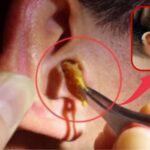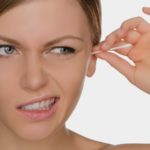Ear cleaning is an important aspect of personal hygiene and health care. Proper ear care is essential to maintain optimal hearing and overall ear health. However, improper ear cleaning can be dangerous for you and your loved ones.
Safe Ear Cleaning Methods
The safest way to remove earwax is to visit a specialist. In cases of hardened or deeply impacted earwax, attempting to remove it yourself can lead to scratches in the outer ear canal, bleeding, or pushing the wax further inside.

Do you know how to safely clean your ears? (Image source: Smartparents)
However, in most normal cases, you can safely remove earwax at home, but it must be done carefully. Here are some safe, professionally recommended ear cleaning methods for your reference.
Using Saline Solution or Ear Cleaning Solutions
Saline solution or specialized ear cleaning solutions effectively and safely help remove earwax. You can purchase these products at pharmacies.
Tilt your head to one side, with the affected ear facing up, and instill a few drops of the solution. Wait for a few minutes, then tilt your head to the opposite side to let the solution and earwax drain out. Gently wipe away any remaining solution with a soft cloth.
This method is gentle, painless, and helps soften earwax for easier removal. Be sure to follow the instructions and dosage for each specific solution. If you experience any discomfort, consult a doctor.
 Safe ear cleaning methods will help remove earwax without affecting your hearing. (Image source: Interhearing)
Safe ear cleaning methods will help remove earwax without affecting your hearing. (Image source: Interhearing)
Using a Soft Cloth and Warm Water
A simple way to clean the outer part of your ears is by using a soft cloth and warm water. Soak the cloth in warm water, wring it out, and gently wipe the outer ear area. Do not insert the cloth or any objects deep into the ear canal.
What to Avoid When Cleaning Your Ears
Improper ear cleaning can lead to several dangers. Here’s what you should avoid when cleaning your ears at home:
Using Cotton Swabs
Despite their common use, cotton swabs are not recommended by medical professionals. They can push earwax deeper into the ear, causing blockages or damage to the eardrum. Excessive force may also scratch or cause bleeding in the ear canal.
Using Sharp Objects
Using sharp objects like hairpins, matchsticks, or fingernails to remove earwax is dangerous and can lead to serious injuries to the ear canal and eardrum, resulting in infections or hearing loss.
Self-Cleaning in Cases of Infection or Abnormalities
If you experience symptoms such as ear pain, itching, discharge, or hearing difficulties, consult an ear, nose, and throat (ENT) specialist instead of attempting to clean your ears yourself. Self-cleaning in these cases may worsen the condition.
While earwax can usually dislodge on its own or with gentle home care, there are times when a doctor’s intervention is necessary. If you feel your ears are blocked, your hearing is impaired, or you experience severe ear pain, fever, discharge, or hearing loss, seek professional help from an ENT specialist.
Source: VTC News
The Do’s and Don’ts of Cotton Swabs
Introducing the ultimate guide to using cotton swabs safely and effectively. We will take you beyond the basics, offering insights into the do’s and don’ts of ear care. Discover the hidden pitfalls and secrets to maintaining healthy ears. From frequency of use to considerations during inflammation, we unveil the mysteries of ear hygiene, ensuring you stay informed and empowered. Prepare to embark on a journey that transforms you into a master of swabbing, armed with knowledge that ensures your ears receive the care and attention they deserve.

































